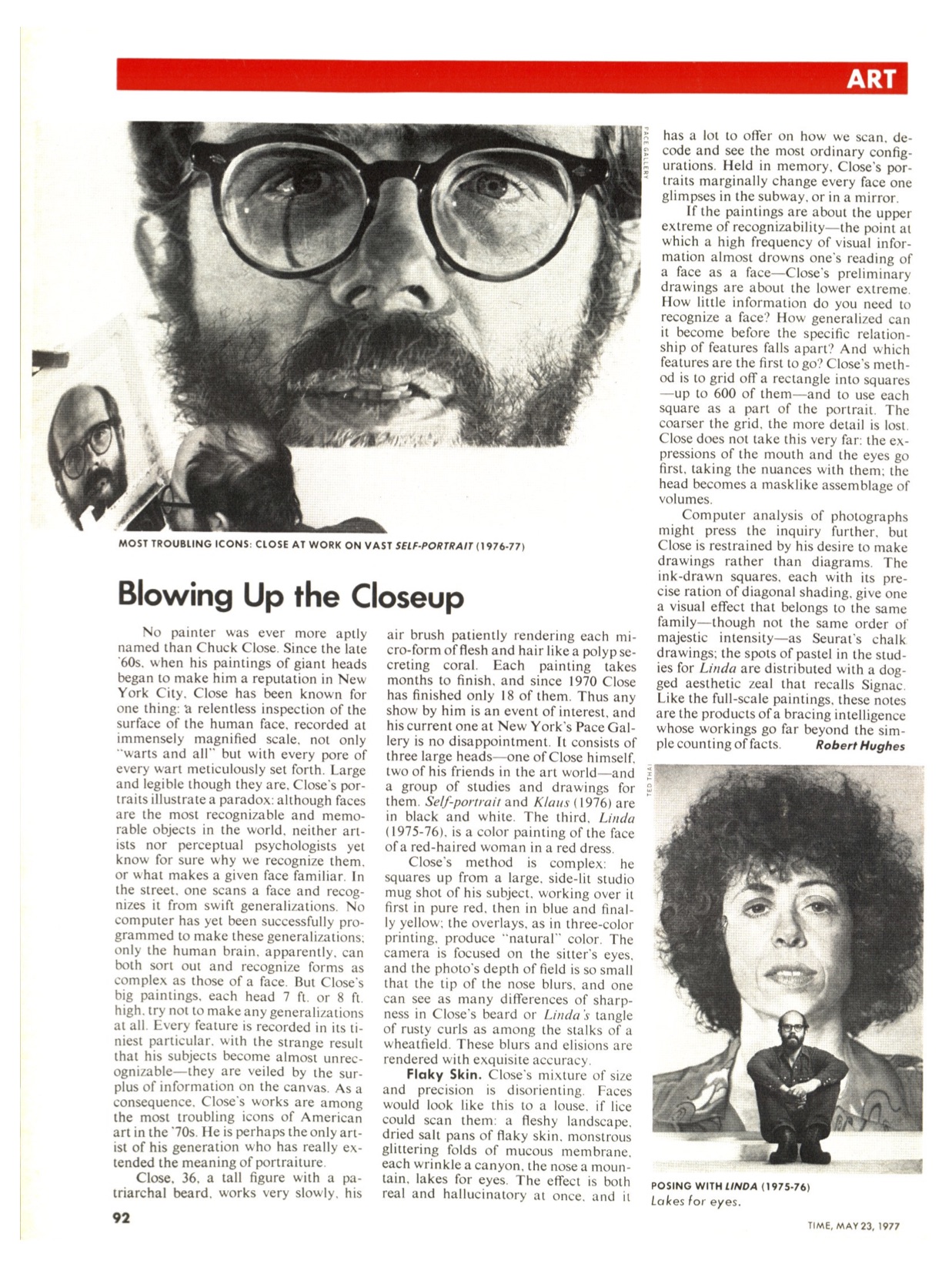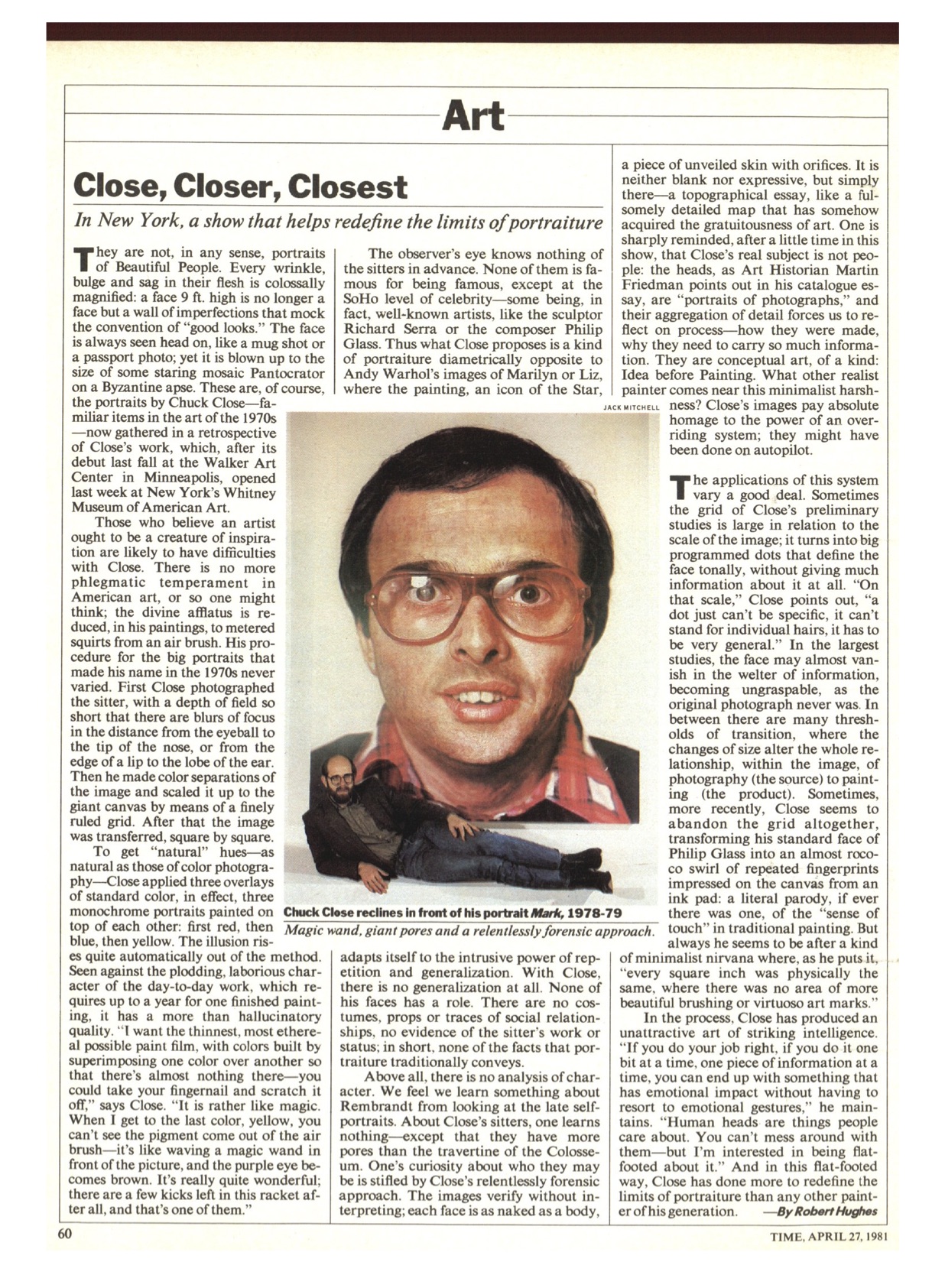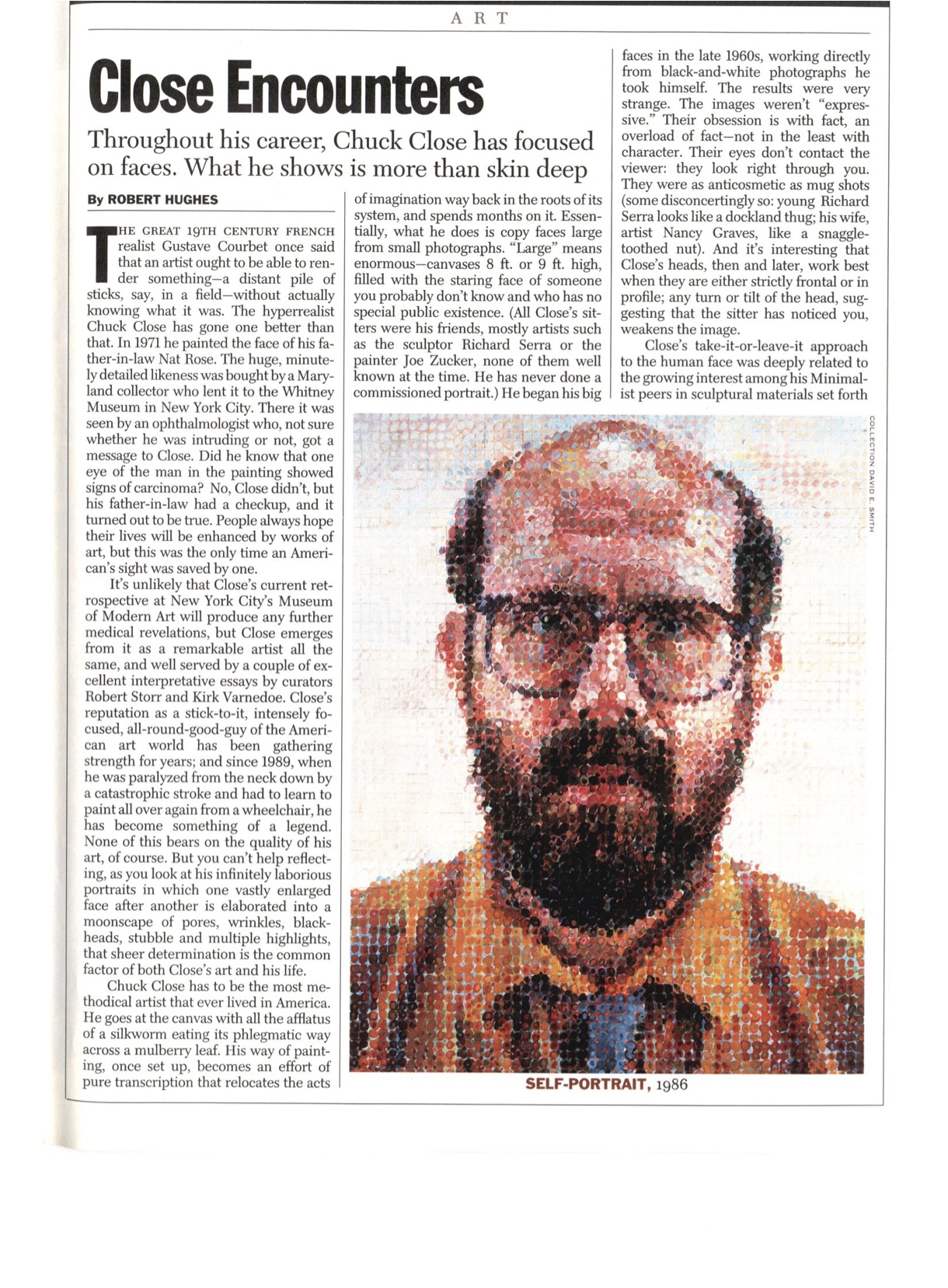
Just as Chuck Close’s enormous works of art loomed over their onlookers, his legacy looms large over the modern art world. Close, a gruff iconoclast and minimalist who created Photorealist portraits across five decades, died on Thursday in New York at 81. He leaves behind a complicated legacy: he is one of the most recognized and influential artists of the last century and a National Medal of Arts recipient, but also was accused of verbal sexual harassment by several women late in his career.
Close’s work transfixed and stymied many art critics, including Robert Hughes, the often scathing and highly influential writer who served as TIME’s chief art critic for more than three decades. Between 1977 and 1998, Hughes wrote three major pieces about Close, each of them in turn skeptical and glowing. Together, they show the magnitude of Close’s talent and impact. You can read them in full below.
The minimalist upstart
In the late 1960s, the Pop art of Andy Warhol, Roy Lichtenstein and others ruled over the art world with their works of abstraction, animation and vibrancy. Close, who was at the time a graduate student at Yale, initially started making art in the realm of Abstract Expressionism, but soon abandoned the effort and turned to painting hyper-literal reproductions of photographs. These works—of himself and other artists, including Warhol—were unemotional and unflinching in their gnarly detail. His work caught the attention of Hughes in 1973, who wrote in TIME lamenting that Close had not been included in that year’s Whitney Biennial.
Four years later, Hughes profiled Close after he opened an exhibition at the Pace Gallery, which included three of his “large head” works. Some aspects of Close’s work clearly disgusted Hughes: “Close’s mixture of size and precision is disorienting. Faces would look like this to a louse, if lice could scan them: a fleshy landscape, dried salt pans of flaky skin, monstrous glittering folds of mucous membrane, each wrinkle a canyon, the nose a mountain, lakes for eyes,” he wrote. “The effect is both real and hallucinatory at once.”
But while Hughes called Close’s works “troubling,” he conceded their innovation: “He is perhaps the only artist of his generation who has really extended the meaning of portraiture.”

The modern art titan
By 1980, Close was a certified star in the art world, and received his first major retrospective at the Walker Art Center. When that retrospective made its way to Whitney, Hughes profiled him again and interviewed Close about his process. “I want the thinnest, most ethereal possible paint film, with colors built by superimposing one color over another so that there’s almost nothing there—you could take your fingernail and scratch it off,” Close told him. “It is rather like magic. When I get to the last color, yellow, you can’t see the pigment come out of the air brush—it’s like waving a magic wand in front of the picture, and the purple eye becomes brown. It’s really quite wonderful; there are a few kicks left in this racket after all, and that’s one of them.”
“If you do your job right, if you do it one bit at a time, one piece of information at a time, you can end up with something that has emotional impact without having to resort to emotional gestures,” Close said. Hughes, intrigued but perhaps not entirely convinced, described Close’s work as “unattractive art of striking intelligence.”

Turning to abstraction
Hughes wrote about Close a final time 15 years after the second profile, as part of a magazine package honoring the ”Leaders & Revolutionaries Of The 20th Century.” A lot had changed since Hughes’ last essay: Close had adapted a more painterly style, rendering pores in swirls and splashes of color, and had also suffered from a stroke that paralyzed him from the neck down and forced him to relearn how to paint in a wheelchair with a brush-holding device strapped to his wrist and forearm.
But while Hughes might have been skeptical of Close’s early years, he was unabashedly an admirer of Close’s looser, more colorful style, which teemed with pixels filed with amoeba-like shapes. “All the time, the surface gets richer and more baroque, a far cry from the uninviting air of the early work,” Hughes wrote. “Some artists get stuck in their style as they age. Others get wilder; they are among the lucky ones, and this show makes it clear that Close is one of them.”


More Must-Reads from TIME
- Cybersecurity Experts Are Sounding the Alarm on DOGE
- Meet the 2025 Women of the Year
- The Harsh Truth About Disability Inclusion
- Why Do More Young Adults Have Cancer?
- Colman Domingo Leads With Radical Love
- How to Get Better at Doing Things Alone
- Michelle Zauner Stares Down the Darkness
Contact us at letters@time.com